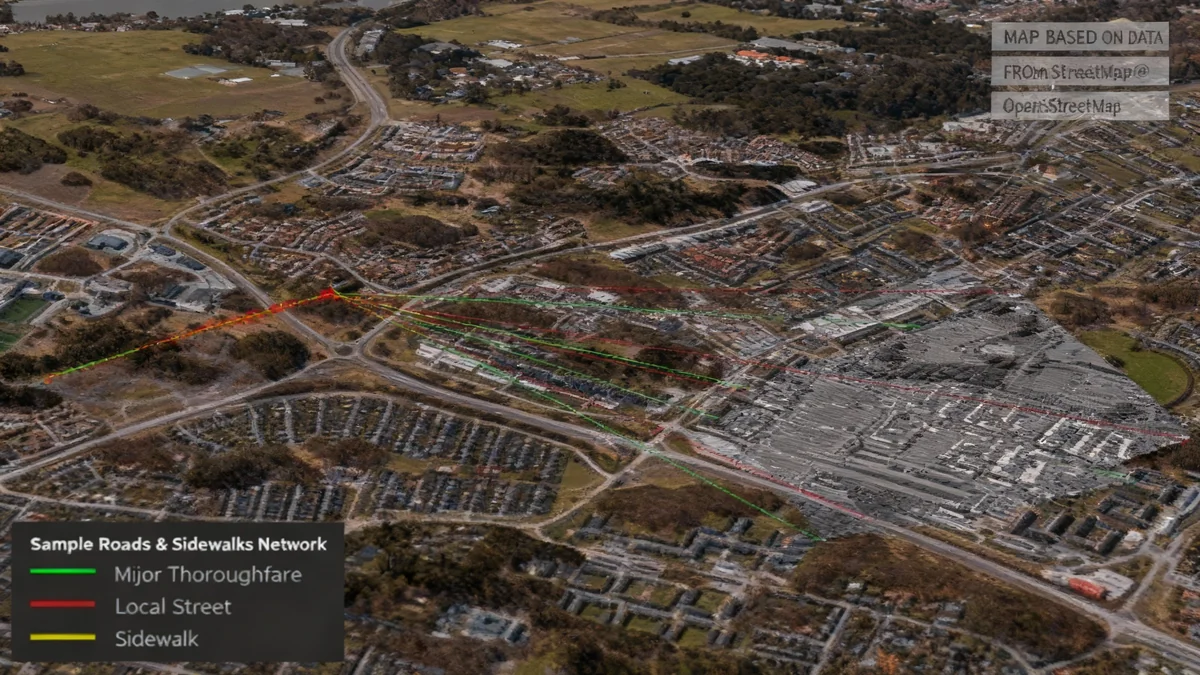A strategic debate is intensifying within Taiwan's military leadership over the future of its naval defense. The revival of a program to build large, advanced frigates has sparked a critical discussion, pitting traditional symbols of naval power against a modern doctrine focused on survivability and asymmetric warfare through a network of smaller, smarter, and more numerous assets.
This shift in thinking questions whether multi-billion dollar warships are a sound investment in an era of satellite surveillance and precision missiles, pushing for a more resilient defense model built on drones, mobile missile batteries, and a sophisticated command-and-control network.
Key Takeaways
- Taiwan is reconsidering its naval strategy, debating between large, traditional warships and a more agile, asymmetric approach.
- Experts argue that large ships are highly vulnerable in the narrow Taiwan Strait due to advanced surveillance and anti-ship missile technology.
- The proposed alternative is a "kill web," a distributed network of sensors and shooters including drones, satellites, and mobile missile launchers.
- This modern strategy prioritizes survivability, dispersion, and overwhelming an adversary with numerous low-cost threats.
- The debate highlights a necessary shift in military doctrine, moving from a focus on prestige platforms to one on operational effectiveness and resilience.
The High-Stakes Gamble on Large Warships
Under President Lai Ching-te, Taiwan has revived the long-shelved Cheng Hai program, which aims to construct next-generation frigates displacing over 6,000 tons. On paper, these vessels represent a significant leap in naval capability and are presented as a symbol of national resolve. With defense spending projected to approach 5% of GDP by 2030, the funding for such ambitious projects appears secure.
However, critics argue that this approach ignores the stark realities of geography and modern military technology. The Taiwan Strait is a narrow body of water, just 130 kilometers wide at its narrowest point. This confined space is under constant surveillance from a vast network of Chinese intelligence assets.
A Fishbowl Environment
China's People's Liberation Army (PLA) maintains a comprehensive intelligence, surveillance, and reconnaissance (ISR) canopy over the region. This network includes synthetic-aperture radar satellites that can see through clouds, high-resolution optical satellites, over-the-horizon radars, and a growing fleet of unmanned systems operating in the air, on the sea, and underwater. In such a transparent environment, a large surface combatant cannot remain hidden.
Every electronic signal, from radar sweeps to routine communications, can be used to detect, track, and target a large vessel. The PLA has developed a sophisticated strike architecture specifically designed to neutralize such high-value targets, employing anti-ship cruise and ballistic missiles that are difficult to defend against.
Lessons from Modern Naval Combat
Historical precedent reinforces the vulnerability of large ships in contested waters. During the 1982 Falklands War, the British Royal Navy lost multiple modern warships to a relatively small number of Argentine anti-ship missiles. More recently, the war in Ukraine provided a powerful demonstration of asymmetric naval warfare.
"The lesson is blunt: in an era of cheap, smart, numerous missiles and drones, distributed denial beats prestige hulls."
Ukraine, possessing no large warships of its own, successfully used a combination of land-based missiles, unmanned surface vessels, and aerial drones to sink Russia's Black Sea Fleet flagship, the Moskva. This action forced the remainder of the fleet to retreat, effectively achieving sea denial without a traditional navy. This outcome suggests that a focus on large, conspicuous targets may be an outdated and dangerous strategy.
The 'Kill Web' A New Vision for Defense
The alternative to building large frigates is a concept known as the "kill web." This strategy aligns with Taiwan's Overall Defense Concept, which emphasizes asymmetry, dispersion, mobility, and resilience. Instead of concentrating resources into a few high-value targets, this doctrine advocates for a distributed network of sensors and shooters that are harder to detect and destroy.
This network would span multiple domains, including space, air, sea, and land, all connected by resilient communications and decentralized command and control. The goal is to create a system that can survive an initial attack and continue to function effectively, imposing prohibitive costs on any potential invasion force.
Components of a Modern Kill Web
- Sovereign Space Assets: Radar and optical satellites for persistent surveillance and early warning.
- Expendable Drones: Swarms of low-cost aerial and surface drones for target acquisition and attack, overwhelming enemy defenses.
- Mobile Missile Batteries: Truck-mounted anti-ship missiles dispersed along the coastline, capable of 'shoot-and-scoot' tactics.
- Smart Minefields: Remotely controlled mines to block or channel amphibious landing routes.
- Passive Sensing: Distributed ground stations that detect enemy emissions without revealing their own position.
For the price of a single large frigate, Taiwan could field thousands of drones, numerous mobile missile launchers, and a constellation of small surveillance satellites. These assets do not have the visual appeal of a warship but are far more effective at achieving the primary mission: national survival.
Building Resilience from the Ground Up
Implementing a kill web strategy requires more than just new hardware; it demands a fundamental shift in military doctrine and a focus on resilience across all sectors. A key element is hardening the entire network against electronic and kinetic attacks.
Fighting in the Electromagnetic Spectrum
Modern warfare is fought as much in the electromagnetic spectrum as it is on the physical battlefield. A successful denial strategy requires robust electronic warfare (EW) and counter-EW capabilities. Every unit, from a missile launcher to a command post, must be equipped with its own defenses against jamming and spoofing.
Positioning, navigation, and timing (PNT) resilience is also critical. An adversary will likely attempt to jam or spoof GPS signals in the opening moments of a conflict. To counter this, Taiwan would need to develop a terrestrial PNT backup system, such as an enhanced Loran (eLoran) grid, to ensure that weapons systems and critical infrastructure remain synchronized and functional when satellite signals are degraded.
A Whole-of-Society Approach
True resilience extends beyond the military. Critical civilian infrastructure, including telecommunications, the power grid, and financial systems, must be hardened against attack. This involves creating microgrids with distributed energy sources and ensuring redundant satellite communications for essential services.
An industrial mobilization plan is also necessary. A network of small machine shops, 3D printing facilities, and electronics technicians could be organized to rapidly produce and repair the thousands of expendable drones and other systems that form the backbone of the kill web. This ensures the defense can be sustained over time.
Leadership for a New Era of Warfare
Ultimately, the effectiveness of Taiwan's defense rests on the willingness of its leadership to embrace new concepts and move beyond outdated paradigms. The traditional fixation on large ships and powerful guns as a measure of strength must give way to a more pragmatic focus on what works in the 21st century.
Investing in sovereign space capabilities, such as surveillance satellites and resilient communications, is no longer a luxury but a necessity. Space is now a critical warfighting domain, and failing to prioritize it would be a significant strategic error.
The Pentagon's most valuable contribution to Taiwan's defense may not be hardware but doctrine. Assisting Taiwan in developing and wargaming a multi-domain kill web, and ensuring interoperability with U.S. forces, would significantly enhance deterrence and reduce the risk of a wider conflict. The choice facing Taiwan is not just about which ships to build, but about which future it is preparing to fight for.





